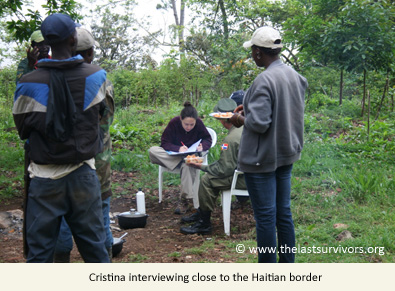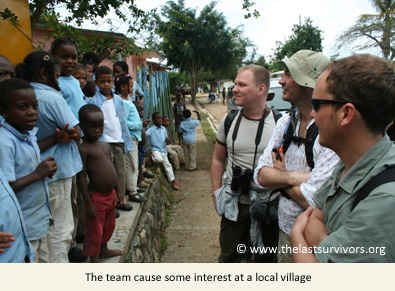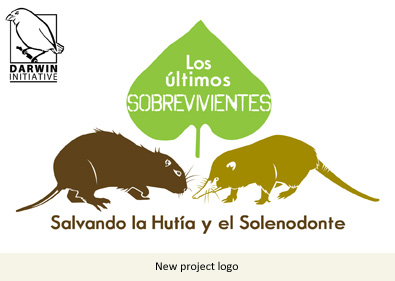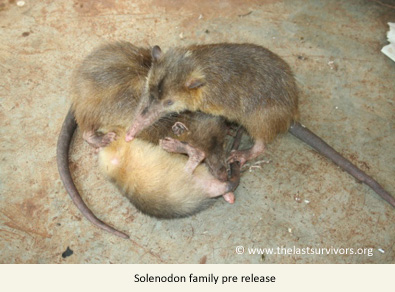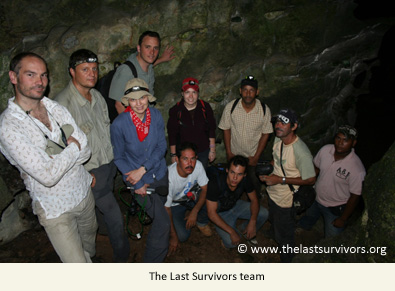We were not expecting to write another blog until mid June but there is lots of exciting news that we want to share with you and so it warrants this special edition blog.
Cristina Fernandez Secades, a student from Imperial College, has joined the project. She has hit the ground running and has already had a very productive time interviewing people in villages located near one of the national parks. The Masters project she is carrying out has two main objectives:
1) to establish the level of predation that solenodon and hutia are suffering because of wild and domestic dogs;
2) finding out the tolerance of people to damage of crops/livestock from both endemic and introduced species before a response is triggered, in addition to assessing the type of response created (e.g. poison, traps, hunting, etc).
Arguably the most exciting news is that we have had a BBC reporter and cameraman accompany us for a week while we were carrying out field work. Their time out here coincided with a visit from Dr. Sam Turvey (Zoological Society of London; EDGE) and Dr. Richard Young (Durrell Wildlife Conservation Trust) which meant the BBC were able to get the whole “Last Survivors” team in action. Various reports have been produced and will be shown on the BBC website, radio and TV.
The first report, entitled “Ghost hunters: On the trail of a ‘living fossil” is available on line from the BBC website here and you can watch the second report, entitled “The cave of bones: A story of solenodon survival” here.
I’ll post details of other reports and programs on here and on our facebook groups as soon as we know the links and time of showing – so keep an eye on this space!
You may have noticed the next bit of news already, namely the fact that the project now has its own logo. This eye catching logo was designed and donated by Ivan Mota from “Unknown”. We hope you love the logo as much as we do. This image will be representing us and will be used in all the material we produce in order to educate people and increase awareness of the endangered mammal species of the Caribbean.
We have made a major update on the website to enable all of you to track our progress on establishing the past and current distribution of the Hispaniolan solenodon and hutia. You can check out the map as it currently stands here. Don’t forget that this is a dynamic map that will be regularly updated so keep coming back to it to see where we have managed to find signs or even seen our two secretive mammals.
Finally, Joe Nunez-Mino will be back in the UK in July and will be giving a series talks along with Dr Sam Turvey. The Apothecary centre, where the talks are being held, will also be hosting an exhibition with a selection of photos from some very talented Dominican Republic photographers. These photos will not simply be about solenodon and hutia but also include photos of some of the other unique fauna and flora of the island along with photos of people and landscapes. The event is ticketed and photos will also be on sale with all proceeds benefiting the conservation project. For further details of the event and how you can get tickets please go to the Apothecary Centre website.
One bit of news from the field work that we’d like to share with you is the fact that this week we got a report of a solenodon family that had been cornered by dogs and captured by local villagers. Luckily, we were contacted on this occasion and after rushing to get to the remote area where the solenodon were, we were able to ensure their prompt release after checking that they were in good condition and had no injuries that may have impacted on their chances of surviving. The project will continue to try and make more people aware of these mammals at the same time as we learn more about them in order to reduce these sorts of incidents from occurring.
Another update coming soon with more details about the BBC visit along with Sam and Richards’s time in the Dominican Republic.
